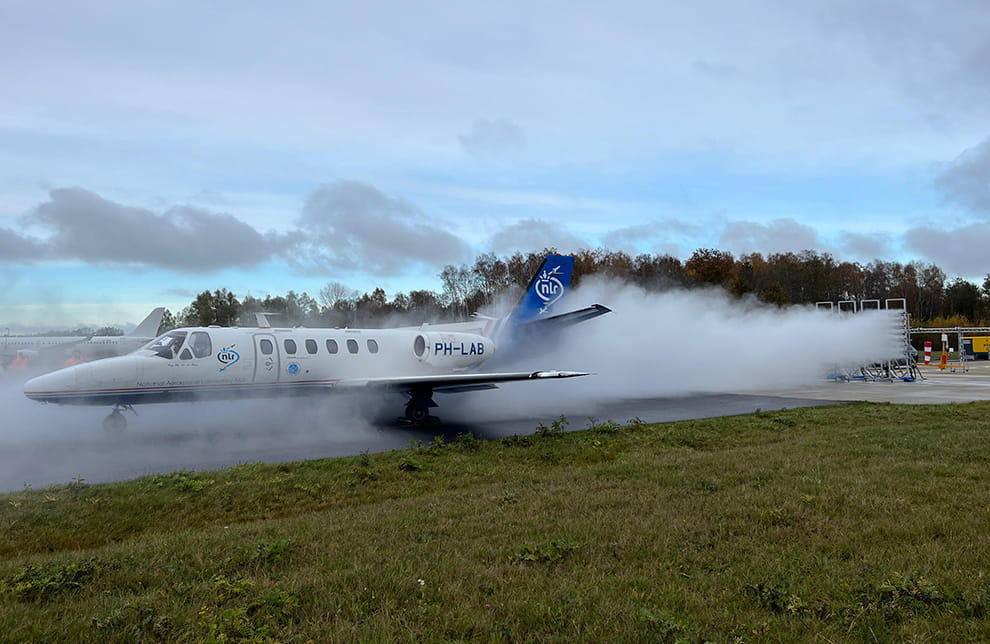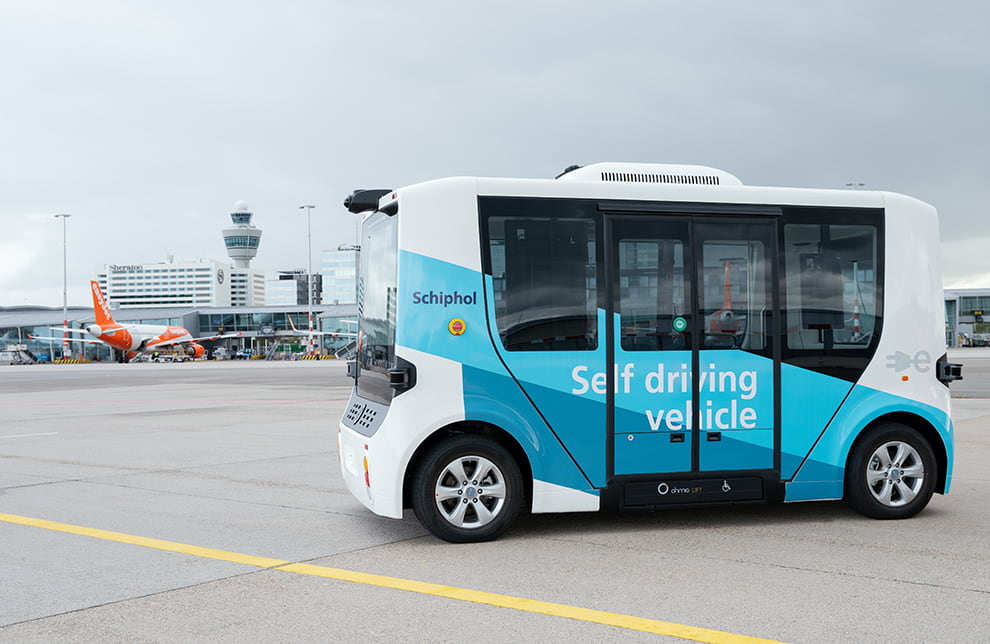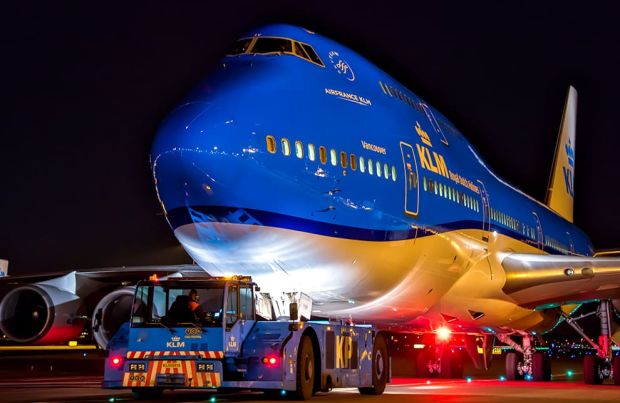Written by Dirk Bresser and Simon Prent: What is sustainable taxiing? (Part 1)
After our previous blogs about the benefits of sustainable taxiing and why taxiing on one engine is not a better solution, it is now time to consider how we could implement sustainable taxiing in practice. Again, it is more complicated than it may seem at first sight. In this blog we will limit the discussion to sustainable taxiing in its most basic form. In the next blog we will add an extra dimension and discuss autonomous sustainable taxiing and why we think it is the future.
A recap: what was it we wanted to achieve with sustainable taxiing?
Sustainable taxiing is the term we use to describe an aircraft being moved on the ground from A to B without using its own engines. Aircraft engines, after all, are relatively inefficient for the purposes taxiing. Sustainable taxiing yields benefits in the form of lower fuel consumption, which in turn leads to fewer emissions of harmful substances such as CO2, nitrogen and ultra-fine particulate matter, which is exactly what we want to achieve!
As we said, in this blog we focus on sustainable taxiing in the often-used sense of sustainable aircraft towing. We distinguish two different systems:
- On-board systems, which are systems built into the aircraft
- Ground-based systems, which are systems that are not built into the aircraft
1. On-board systems
The term ‘on-board’ says it all: this is a system that is built into the aircraft, in the form of an electric motor that is installed in the aircraft’s landing gear. The electric motor drives the aircraft wheels, allowing it to move forwards and backwards without using the engines. The system draws its energy from the APU, the extra motor in the aircraft that provides electricity and powers the air conditioning and hydraulics. From the airline’s perspective, this seems a logical solution, allowing aircraft to move around airports sustainably with practically no procedural changes required, while the pilot retains control of the aircraft. Simple, right?
Deploying this system would also enable the airport to wash its hands of this problem. After all, an airport does not own any aircraft, so the implementation of the measure would be entirely in the hands of the airlines. In fact, the airport is very much involved in and committed to the development of sustainable taxiing, and this has everything to do with the disadvantages of the on-board system.
Disadvantage number one: 150 kg of extra weight
The main disadvantage of on-board systems is the weight. Airlines want to keep their aircraft as light as possible, and taking extra weight into the air costs a lot of fuel, amounting to about 3-4% of the extra weight per hour. In other words, if you carry 100 kgs of extra weight, you will use 3 to 4 kgs of extra fuel every hour to keep that weight in the air. This is also why airlines invest in digital newspapers, books and magazines and lighter seats and other materials. Every extra kg is one too many, and every kg increases the fuel consumption. So on-board systems save kerosene on the ground, but because of the extra weight - about 150 kg - you consume more fuel in the air. Partly because of this, this technology currently only leads to fuel savings in combination with short flights, while these are precisely the flights that we hope to, in time, replace with transport by train. On certain routes and up to a distance of 700 kms, trains can be an effective alternative to air travel.
Disadvantage number two: 60% slower
Another disadvantage is that, using the current technology, aircraft can only taxi at 1/3 of their normal speed using on-board electric motors. This leads to significantly longer taxi times and hence capacity challenges for airports. The only way to go faster is to turn on the aircraft’s engines, which is exactly what we are trying to avoid.
WheelTug
Several initiatives to develop on-board systems have been started and then stopped again, of which the Electric Green Taxiing System (EGTS) is the best known. There is one other party in the market who uses this technology: WheelTug. The WheelTug is an electric motor that is installed in the nose wheel. This system is expected to be certified for the Boeing 737-700/800 (all types) and 900 in 2021. The WheelTug is retrofittable and so can be installed on existing aircraft. The weight of the electric motor also leads to extra fuel consumption in the air, and the top speed is about 8 knots (15 km/h (versus 30 knots (56 km/h) for a normal taxiing aircraft).
WheelTug is increasingly marketing its product as a solution to increase efficiency at airports, and less as a solution for sustainable taxiing. In the next blog we will explain what’s interesting about that.
Technology In development
You might conclude that on-board technologies are not sustainable and so these developments can be written off, but that would be too hasty. The technology is continuing to develop and is moving in the right direction, so it is possible that the sustainability requirements will be met in a few years’ time. In addition, we have to take into account that airlines that choose this technology will not invest in other solutions.
2. Ground-based systems
Ground-based systems are separate towing vehicles that are not built into the aircraft. The means of propulsion remains behind at the airport and the aircraft does not have to carry any extra weight into the air. This logically implies that airports can play an important role in making this taxiing method more sustainable. Schiphol has taken steps in this direction by launching a ‘Taxibot’ trial in 2020 together with a number of partners.
Taxibot
The Taxibot is currently the only ground-based alternative and the only certified technology for sustainable taxiing on the market. As a result, the brand name ‘Taxibot’ is often used as a generic name for ‘ground-based systems’. The Taxibot is in fact a special tow tractor capable of towing aircraft to and from runways at high speeds (23 knots, or 43 km/h). The product can tow all Airbus A320 and Boeing 737 aircraft (with the exception of the 737 MAX). The Taxibot prevents excessive forces being exerted on the nose wheel, mainly by leaving the braking to the aircraft itself.
We are currently working on a feasibility study based on the outcomes of this trial and we will publish the results later this year.
Taxibot takes aircraft to runway at Schiphol
Taxibot versus pushback truck
The ground-based concept is actually very simple. An external vehicle tows the aircraft to and from the runway, disconnects, and drives to collect the next aircraft. But that’s what a normal pushback truck does, right? Correct. Yet it is a common misconception that you can perform the complete taxi process with a normal pushback truck. These tractors can move a full plane over a very short distance, or an empty aircraft over a long distance. But a combination of the two – a full aircraft over a long distance at speed – is not permitted, because it would damage the aircraft’s nose wheel. This is because of the huge forces exerted on the nose wheel when accelerating or braking while towing a heavy plane.
Pilot retains control
So how does the Taxibot do it? While taxiing, the control of the combination of Taxibot and aircraft is handed over to the pilot, who is responsible for steering and braking. The latter factor is the big difference with a normal pushback truck, where the truck applies its own brakes and so puts a lot of strain on the nose wheel. So the Taxibot is really nothing more than an external propulsion system; all other taxiing operations are carried out as normal.
Although the pilot steers and brakes the aircraft, the Taxibot still has a driver, who takes over control for the pushback (pushing the plane back at the gate) and for driving the Taxibot back to the gate after it has decoupled from an aircraft, or to collect a plane that has just landed.
As already mentioned, we are currently working on a feasibility study together with our partners. We will explain whether the introduction of sustainable taxiing really is as simple as it seems in a future blog.
Read the previous blogs
-
Tap and go with your Digital Travel Credential!
Published on:Can you board and cross the border faster with a digital travel document? At the request of the EU, we are testing a DTC together with the government and KLM.

-
Test capturing ultrafine particles with droplets
Published on:We are working diligently to reduce the amount of ultrafine particles. A possibility is the use of water droplets to remove ultrafine particles from the air.

-
Autonomous Bus Initiative
Published on:Our ambition: operating the world's most sustainable and top-tier airports by 2050. With this in mind we're putting autonomous buses to the test on airside.


